You are here
Federal Deficit and Debt: June 2020
Every month the U.S. Treasury releases data on the federal budget, including the current deficit. The following contains budget data for June 2020, which was the ninth month of fiscal year (FY) 2020.
Current Federal Deficit
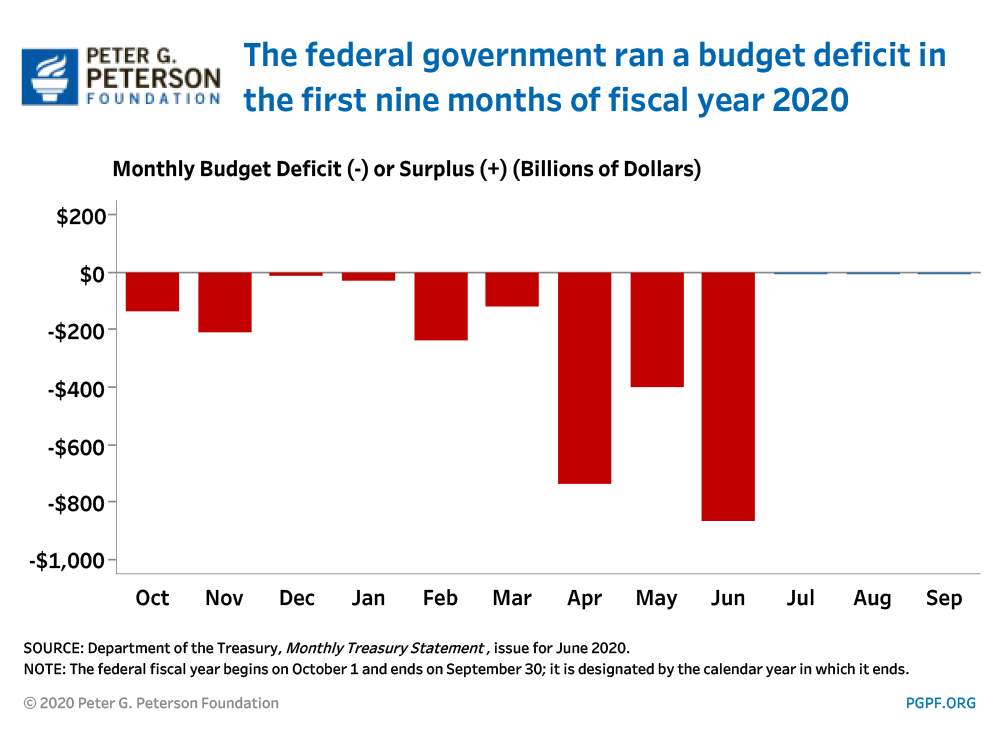
- Federal Budget Deficit for June 2020: $864 billion
- Federal Budget Deficit for June 2019: $8 billion
The deficit for June 2020 was $856 billion larger than the deficit recorded in June 2019, and the largest monthly deficit ever recorded. The sharp increase in the June deficit was caused by higher spending and lower revenues, both of which stem in large part from the economic effects of the COVID-19 pandemic and the legislative response to it. More than half of the increase in the deficit was due to higher outlays by the Small Business Administration, which oversees the Paycheck Protection Program.
The increase in the June deficit would have been slightly smaller if not for shifts in the timing of certain federal payments. In 2019, June 1 fell on a weekend, which shifted $50 billion of payments into May. Without those shifts, the June 2020 deficit would have been $806 billion larger than the deficit in June 2019.
Cumulative Federal Deficit
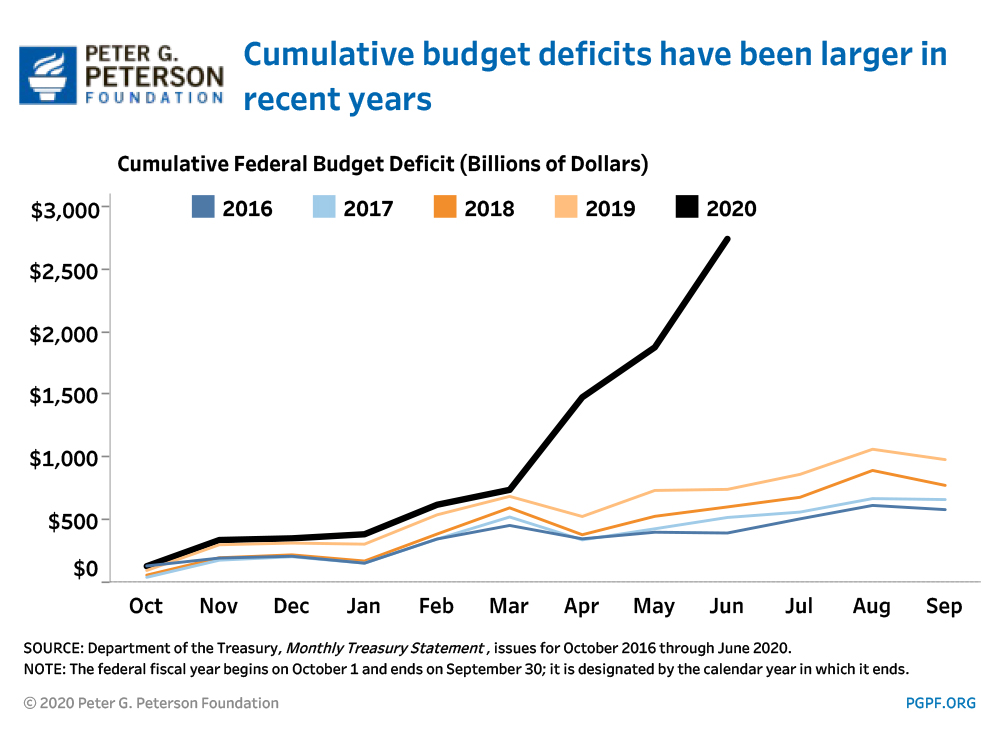
- Cumulative FY20 Deficit through June 2020: $2,744 billion
- Cumulative Budget Deficit over same period in FY19: $747 billion
The cumulative deficit through the first nine months of FY20 was $1,997 billion larger than it was through the first nine months of FY19. The increase in the cumulative deficit reflects a $1,648 billion increase in outlays and a $349 billion decrease in revenues.
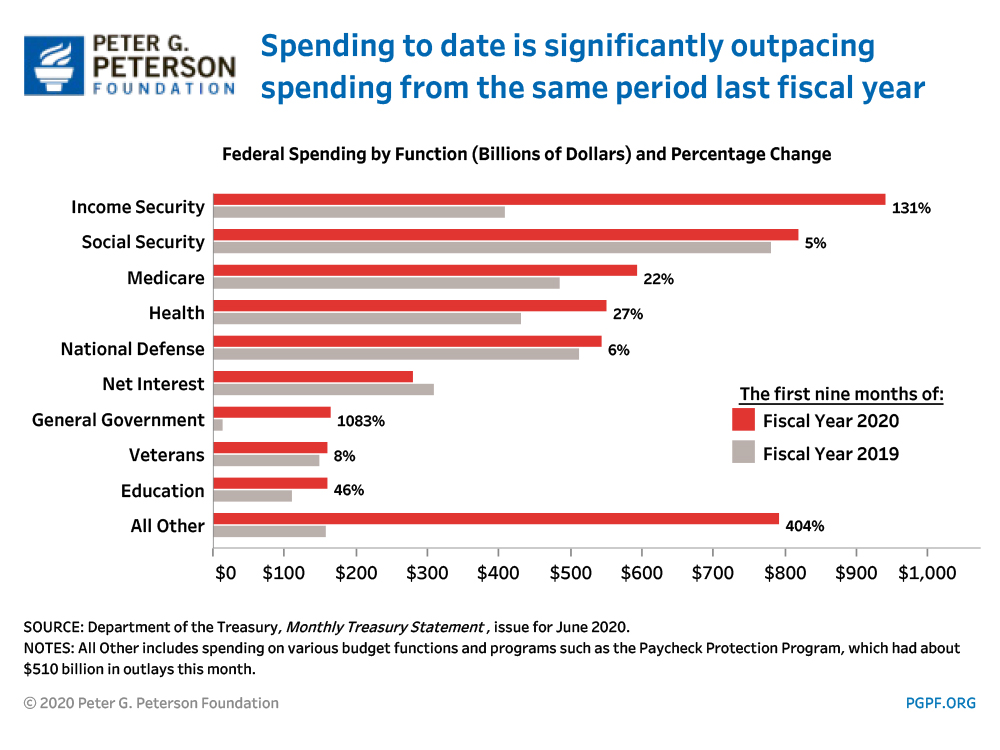
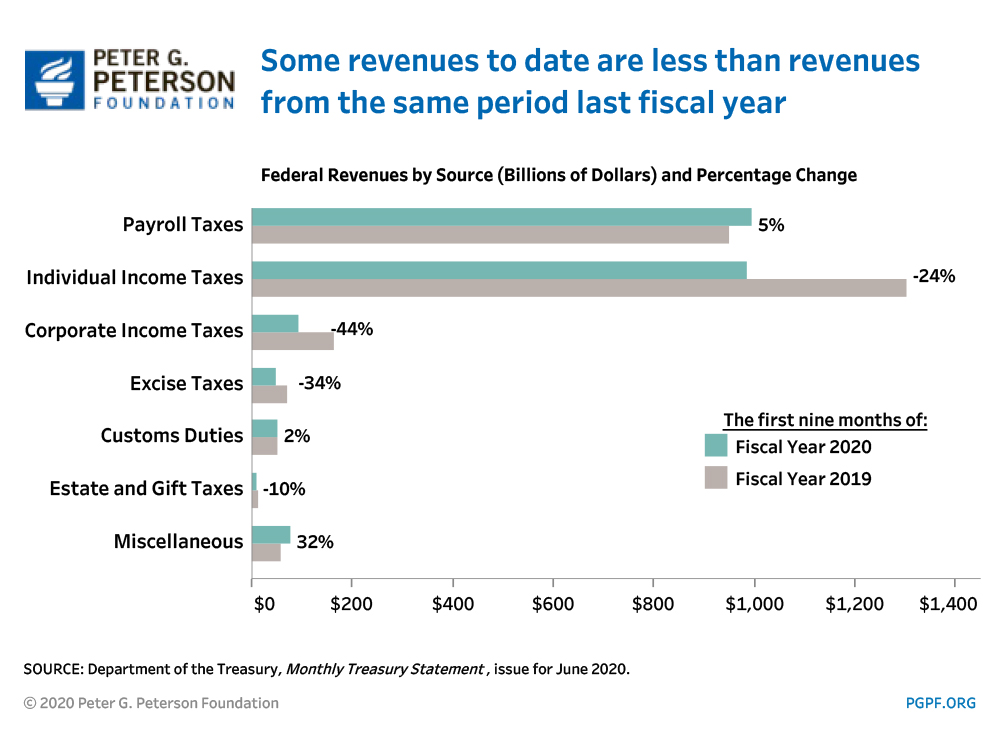
National Debt
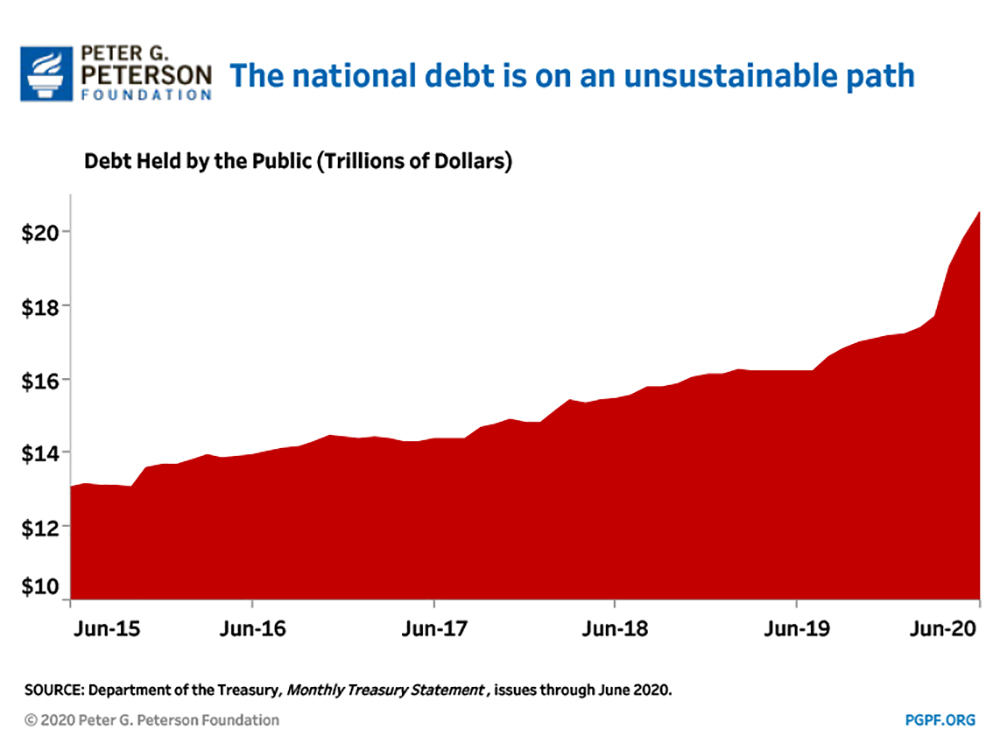
- Debt Held by the Public at the end of June 2020: $20.5 trillion
- Debt Held by the Public through June 2019: $16.2 trillion
The deficit varies from month to month and some months may even record a surplus – for example, when taxpayers are submitting their personal income taxes at the filing deadline. That typically happens in April, but has been delayed until July this year.
The recent increases in debt reflect the effects of the pandemic and the government’s decision to support those who were negatively affected by the closure of much of our economy to prevent the spread of COVID-19. Once the situation has stabilized, focus needs to return to the country’s underlying fiscal situation.
